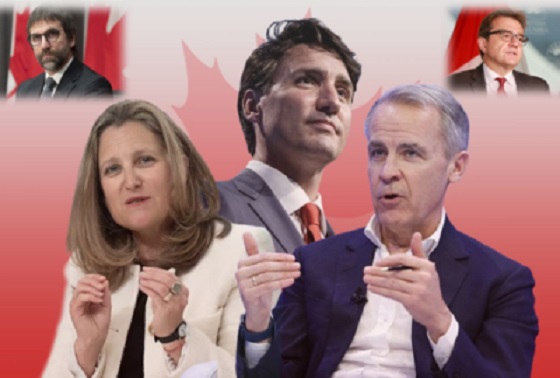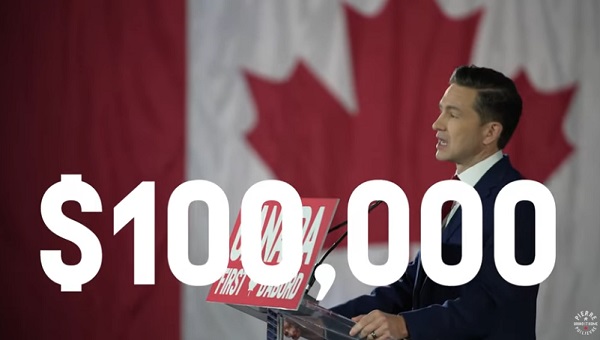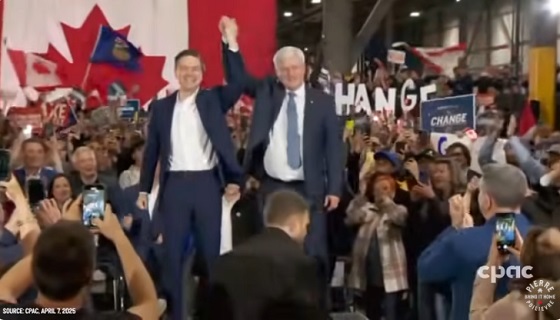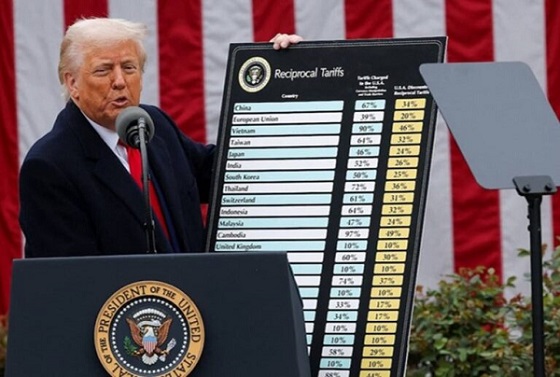espionage
Three Steps to Fixing the FBI: Interview with Whistleblower Colleen Rowley

From Matt Taibbi of Racket News
Depoliticization, decentralization, and transparency are all achievable goals
On August 13, 2001, 33-year-old French citizen Zacarias Moussaoui paid $6,800 in $100 bills to train on a 747 simulator at the Pan-Am International Flight Academy in Eagan, Minnesota. A retired Northwest Airlines pilot named Clarence “Clancy” Prevost thought Moussaoui’s behavior was odd for someone with no pilot’s license and told his bosses as much. When they said Moussaoui had paid and they didn’t care, Prevost said, “We’ll care when there’s a hijacking and the lawsuits come in.”
The company went to the FBI and on August 16, in what should have been one of the biggest arrests in the history of federal law enforcement, Moussaoui was picked up on an immigration violation. Agents on the case wanted permission to search Moussaoui’s belongings, with one asking superiors as many as 70 times for help in obtaining a warrant. The situation grew more urgent when the French Intelligence Service sent information that Moussaoui was connected to Islamic radicals with ties both to Osama bin Laden and the Chechen warlord Khattab, and that even within this crowd, Moussaoui was nicknamed “the dangerous one.”
Coleen Rowley, the Chief Division Counsel for the Minneapolis Field Office, absorbed agents’ concerns quickly and was aggressive in asking superiors to seek a Foreign Intelligence Surveillance Act (FISA) warrant to investigate further. One of the goals was a look at Moussaoui’s computer, as agents believed he’d signaled he had “something to hide” in there. But unlike the former Northwest pilot Prevost, whose superiors trusted his judgment and escalated his concerns, Rowley and the Minneapolis field office were denied by senior lawyers at FBI Headquarters. The Bureau was sitting on the means to stop 9/11 when the planes hit the towers.
This story is actually worse than described, as Rowley made clear in what became a famous letter she wrote to then-Director Robert Mueller the following May. “Even after the attacks had begun,” she wrote, “the [Supervisory Special Agent] in question was still attempting to block the search of Moussaoui’s computer, characterizing the World Trade Center attacks as a mere coincidence with Misseapolis’ prior suspicions about Moussaoui.”
While the Bureau blamed 9/11 on a lack of investigatory authority, the actions of the Minnesota office showed otherwise. Rowley’s decision to confront Mueller with a laundry list of unnecessary bureaucratic failures made her perhaps the FBI’s most famous whistleblower. Her letter excoriated the Bureau’s Washington officeholders for failing to appreciate agents in the field, and for implicitly immunizing themselves against culpability.
“It’s true we all make mistakes and I’m not suggesting that HQ personnel in question ought to be burned at the stake, but, we all need to be held accountable for serious mistakes,” she wrote, adding: “I’m relatively certain that if it appeared that a lowly field office agent had committed such errors of judgment, the FBI’s [Office of Professional Responsibility] would have been notified to investigate and the agent would have, at the least, been quickly reassigned.”
The relentless and uncompromising style of Rowley’s letter made it a model for whistleblower complaints. As the administration of George W. Bush hurtled toward war in Iraq, Rowley was made a cultural and media icon, occupying the center spot on Time magazine’s “Persons of the Year” cover in January, 2003.
For these reasons and more I was pleased to see after running articles earlier this week about the FBI and the reported choice of Kash Patel as Director that Coleen commented under the second one. I’d reached out to her previously after four whistleblowers came forward about questionable post-J6 investigations, and with the choice of Patel and rumors of a major housecleaning of the Bureau’s Washington office, similar issues seemed in play.
“A large majority of FBI agents always held Headquarters in contempt, knowing that it only attracted the losers, brown-nosing careerist political hacks who wanted to climb the ladder to go thru the ‘revolving door’ at age 50 to make their corporate millions,” she wrote. “The best, most competent agents typically refused to sacrifice their integrity and their families to climb the ladder in that Washington, DC cesspool.”
Part of my personal frustration with the FBI story is that the audiences that cared about its Bush-era offenses have largely turned a blind eye to its issues since Donald Trump’s rise to power, even though many problems are similar. Coleen, who manages the tough trick of maintaining the respect of both liberal and conservative audiences, is the perfect person to help bridge that gap. I reached out to her earlier this week and we talked about Patel, the long-term challenges facing the Bureau, and possible fixes.
MT: Kash Patel made public comments about closing the Washington headquarters and turning it into a “museum of the deep state.” He added he’d then “take the 7,000 employees that work in that building and send them across America to chase down criminals.” Does that make any sense?
Coleen Rowley: I hate to go to bat for Kash Patel because I’ve been disappointed by all of these people in Washington. It’s such a cesspool. I really don’t think anybody can keep their head above it. So I hate to really laud him, but I do think he is completely correct on three or four things, and they’re major things. And he’s getting smeared for the thing that he’s most correct about. FBI headquarters: the FBI itself wants to take that down.
MT: How?
Coleen Rowley: Agents hate the J. Edgar Hoover building on Philadelphia Avenue. They’ve been talking about moving forever, all the agents. It was considered a matter of pride to not stoop to go to headquarters. This goes way back. Everyone knew that the ones who were going to headquarters were the ones trying to climb the ladder. They didn’t care about cases. They would always do what’s politically correct. And so they were all made fun of. In fact, Jules Bonavolonta wrote a book about how bad headquarters was.
MT: Is it The Good Guys?
Coleen Rowley: That sounds right. Everyone in the FBI knew that the people in that building were corrupted, because they’d decided to sacrifice themselves to go to headquarters in order to become somebody, by managing. And then especially in later years, the real incentive was to go through that revolving door to make a lot of money. And that’s the Strzoks and McCabes, and all those people.
MT: You’ve talked in the past about a dichotomy between agents in the field and the politically-minded managers at headquarters. Why is that divide harmful?
Coleen Rowley: Because the real work is done in the field. Headquarters was just there to help you do your work. Well, the 9/11 story is a perfect example. I wrote another op-ed in the Los Angeles Times called WikiLeaks and 9/11: What If? It was about this whole idea that’s very counterintuitive to what people are brainwashed to think, but sharing information is the key. The 9/11 Commission even said that if they had just shared information between agencies and then with the public, 9/11 would not have happened.
MT: They said there was a “failure to connect the dots,” I think.
Coleen Rowley: I was asked this when I testified to the Senate Judiciary about siloing and how the information, when it goes up the pipeline, gets convoluted and bottlenecked at headquarters because they want to keep power for themselves there. They really don’t want to let the field and the agents do the job. They want to have so-called oversight. I mean, that’s the good term for it, oversight, but it’s worse than that. They just want to keep the power there.
MT: You wrote that one of the things you liked was the possibility that Patel might decentralize the Bureau. What might that entail?
Coleen Rowley: They could delegate down FISA, and I’m not the first person to have this idea. Legal scholars say one of the best ideas to avoid this bottlenecking of information that occurs at headquarters is for the FISA judges not to have to travel to one particular SCIF [Sensitive Compartmented Information Facility] in Washington. Keep the judges actually out in the field.
MT: I didn’t realize that.
Coleen Rowley: Yeah. They have SCIFs all over the country. So it’s not a problem. And it could be easily delegated down. Why does every request have to go through headquarters and the DOJ, except for control reasons? In all other matters, like criminal Title IIIs, you go straight to a judge. Some judges, they’re going to have differing opinions on things. And maybe a judge, every once in a while, would say no to a Title III.
MT: But that happens anyway, doesn’t it?
Coleen Rowley: Yeah. Very seldom with FISA, but yes. With a FISA application, they’re usually a hundred pages long and there’s tons of probable cause, and every Title III I ever read was beyond reasonable doubt by the time a judge saw it, to be honest. But this travesty that occurred with FISA is because it’s all bottlenecked up there for control in Washington DC, and with a handful of people who don’t want to share this information. I mean, I’ve got so many stories. They won’t even share the Moussaoui story with other offices even after 9/11.
MT: What?
Coleen Rowley: Yeah, because they’re trying to cover it up… It’s a long story but the desire for control at headquarters is a huge thing.
MT: The last time we talked, you might’ve mentioned the suggestion of having more of the Bureau’s top officials gain experience in the field. Wouldn’t that give them more grounding in what’s actually going on in the world? It seems like that’s a problem.
Coleen Rowley: These supervisors at headquarters learn bad habits. You try to “punch your ticket.” That’s the terminology. You try to go there for your year and a half. You hate it, but you do it. You have to bend over and please the bosses to get through that year and a half in order to “punch your ticket” and climb the ladder. The risk aversion is incredible. As a whole, the most competent and best investigators, and this goes to Kash Patel, he gets kudos for actually having investigated something. He was a public defender for seven years, so he has seen things from the other side of an investigation. Meanwhile, by contrast, Comey came out of Lockheed, and I forget where Wray came from [eds. note: Wray worked at King and Spaulding, earning $14 million advising clients like Chevron, Wells Fargo, and Johnson & Johnson], but they came out with millions in their pockets. What is their background? Did they ever actually investigate? Did they ever actually even work in criminal justice? No. So they are political creatures. Not case-makers. Kash at least has some experience.
MT: Seemed like he did a good job with the Nunes memo…
Coleen Rowley: Yes. Whoever did the investigation – I doubt it was solely him – but yeah, they did a great job on that because controlling the press and everything. It’s sad though that it hasn’t reached a lot of the public after all this time. I think it’s important because between the call for transparency… The funny thing is Patel will be all for the whistleblowers of the FBI that you called me about before, the ones that were chagrined about all the stuff they had to do after January 6th. But now he’s going to be against anybody being a whistleblower if he abuses power? It’s always that way. But that call for transparency is key. That’s a test. Then the debunking of Russiagate, and how the FBI got so politicized. And then thirdly, the decentralization of the FBI, so that you take that power out of Washington, DC, where it’s so close to corruption and revolving doors.
MT: There’s one more thing that I wanted to ask about, because you mentioned it in a piece you sent to the New York Times about Comey before he was named Director. You talked about the tactic of trying to “incapacitate” suspects who can’t be prosecuted. This goes along with that issue of “disruption” or “discrediting.” Does the Bureau need to get back to making cases as opposed to these extrajudicial techniques? Can Patel do that?
Coleen Rowley: All that goes back to COINTELPRO.
MT: Right.
Coleen Rowley: One of the things I would hope for, which I haven’t seen it mentioned anywhere, is that he could do something to reduce the entrapment-type cases that just burgeoned with Mueller. Talk about hypocrisy. He went to the ACLU and gave a speech about civil liberties. The whole ACLU stands up and applauds him, all while he is starting those entrapment cases. I was still in the FBI. I retired a year later, took my pension and left. I was like, oh, this is so wrong. They hired these con artist informants to infiltrate Muslim groups. There are books written about this now. [On a recent radio show] I said it’s possible that yes, maybe some of these tactics actually did prevent some nut from going further. You can’t say that isn’t true. On the other hand, the numbers here of cases that were based on the FBI telling vulnerable people, “Look, we can get you a bomb. We can get you this.” And then all of a sudden, when the guy looks like he’s going to press the button on it, that’s when they have the take-down.
It’s such a formula and you’re not accomplishing anything if you’re creating crime. We have so much crime in this country now. If I was Kash Patel, that’s what I would be saying. When they asked me those questions, I’d say, “We’ve got so much crime. It’s all over the country. Why can’t we have more agents out in the field working cases and trying to reduce the violence and the crime and the drug dealing, et cetera?” I think that would be a real winner politically for him to say.
MT: It sounds like you think it’s possible for him to fix some things. But we shouldn’t set ourselves up for disappointment.
Coleen Rowley: I’ve just gotten so cynical. I don’t put hope in anything or anybody anymore. Obama… even going way back, I don’t put hope out with anybody… But if he gets support on some of these things, the call for transparency, depoliticization and decentralization, there’s a chance.
MT: Let’s hope. Thank you!
Please enjoy Racket News. For the full experience, become a paying subscriber.
2025 Federal Election
Researchers Link China’s Intelligence and Elite Influence Arms to B.C. Government, Liberal Party, and Trudeau-Appointed Senator

 Sam Cooper
Sam Cooper
“The PRC uses its UFWD in Canada and around the world to stifle criticism and manipulate Canadian communities. These activities constitute a threat to Canada’s sovereignty and to the safety of Canadians.”
A powerful new investigative map released by diaspora researchers traces political ties reaching from Chinese Communist Party-controlled intelligence networks to the highest levels of British Columbia’s government. The visual exposé centers on Senator Yuen Pau Woo and his pivotal role in welcoming Chinese state-linked entities into Canadian institutions—an effort that resonates in a secretly recorded 2020 meeting obtained by The Bureau, in which Woo assured United Front figures he would help shield them from critical scrutiny.
These same United Front entities have been credited by Beijing for their role in promoting Chinese Canadian candidates during federal election campaigns.

Woo was appointed to the Senate by Prime Minister Justin Trudeau in 2016, with an official announcement citing his work with the same entities now identified by diaspora researchers as Chinese-influenced trade lobbies.
The map, titled “From Ottawa to Victoria,” is part of the ongoing Dotting the Map series from Canadian Friends of Hong Kong and Found in Translation, two diaspora-led civil society groups. Built from open-source records, the map draws direct lines between United Front-aligned business, political, and media organizations and prominent Canadian leaders, including Senator Woo, former BC Liberal Premier Christy Clark, ex-minister Teresa Wat, Premier David Eby’s advisor Ding Guo, and Rise Media journalists.
The researchers caution that no individual named in their report is alleged to be knowingly involved in Chinese influence activities. Rather, the mapping effort is designed to educate voters by highlighting verified affiliations to Chinese state or military-linked organizations.
Rise Media—as reported by The Bureau—played a key role in supporting Mark Carney’s current Liberal candidate Parm Bains in the 2021 contest, in which Bains upset Conservative incumbent Kenny Chiu. That Richmond riding is one of the top three examples of Chinese election interference overturning Conservative candidates, according to former Conservative leader Erin O’Toole.
At the center of the new Dotting the Map diagram is Senator Woo, shown helping open pathways for China Poly Group, a state conglomerate tied to the People’s Liberation Army, and Poly Culture, its cultural diplomacy arm. The map shows that under the Liberal Christy Clark government—with Woo’s active involvement—British Columbia approved multi-million-dollar partnerships with numerous shadowy Chinese entities via HQ Vancouver, a Canadian “public-private” entity created to draw foreign investment into Canada.
Woo’s name is also linked through board roles and event partnerships to the Asia Pacific Foundation of Canada and various CCP-aligned think tanks, including those tied through joint programming to the International Liaison Department, a CCP foreign intelligence arm.
According to the map, Woo co-organized a 2010 event in Canada with Henry Huiyao Wang, founder of the Centre for China & Globalization—a think tank under the ILD that directly advises the Chinese State Council. Wang and Woo co-wrote articles and maintained overt links through the Asia Pacific Foundation during Woo’s tenure as president and CEO.
According to political scientist Anne-Marie Brady, the ILD is “tasked with gathering intelligence on foreign politicians and political parties, and developing asset relations with them.”
In Justin Trudeau’s October 2016 appointment notice, Woo is credited for works including:
“As President and CEO of the Asia Pacific Foundation of Canada from 2005 to 2014, he led a major expansion of the organization and spearheaded the ‘National Conversation on Asia’, a three-year cross-Canada campaign to highlight the growing importance of Asia in the world and for Canada. Currently, he serves as President of HQ Vancouver, a public-private partnership established to promote British Columbia as a head office location for global firms.”
According to the map, Teresa Wat, while serving as a minister in Christy Clark’s Liberal government, extended Belt and Road cooperation to British Columbia, joined Huawei and a local telecom firm in 5G research initiatives, participated in multiple PRC-affiliated delegations, and came from a background in Chinese state-linked media. She is also listed as having facilitated the involvement of Chinese real estate tycoons in provincial-level discussions on infrastructure and housing.
The map identifies Ding Guo, founder of the Canada Committee 100 Society (CCS100), as a critical node. Guo is shown as a journalist from Shanghai who transitioned into a leadership role in B.C. Chinese-language media and political mobilization.
As previously reported by The Bureau, in December 2021, then-Attorney General David Eby approved a $20,000 provincial grant to CCS100, citing its anti-racism and Chinese diaspora engagement goals. The grant was awarded while Guo served as a Chinese community advisor to Eby. A February 2021 report from a Chinese Communist Party organ cited CCS100 among several Canadian groups praised for “voter education, mobilization, and fundraising” efforts during the 2019 election cycle.
Premier Eby also awarded Ding Guo the King Charles III Coronation Medal, the researchers found.
Kenny Zhang, also named in the map, is shown occupying a dual role as a former executive director of HQ Vancouver and head researcher with Ding Guo’s CCS100. He was affiliated with Rise Media, which promoted Liberal candidate Parm Bains over MP Kenny Chiu during the 2021 federal election campaign—and Zhang was also awarded a King Charles III Coronation Medal by Senator Yuen Pau Woo.
The Bureau’s publication of the “Woo Tape” forms part of the evidentiary spine of the researchers’ latest map. All three—Ding Guo, Kenny Zhang, and Senator Yuen Pau Woo—were present in this groundbreaking piece of evidence.
In the May 2020 recording, Senator Woo tells CCS100 leaders, including Ding Guo, that he will help protect their organizations from scrutiny in Canadian public discourse, including inside Parliament.
The remote-online meeting, captured on audio and visual files held by The Bureau, included figures tied to United Front-linked institutions and media outlets aligned with PRC narratives. In the meeting, Woo states: “Whether you belong to an organization, that happens to be listed as a United Front organization, should not be a litmus test.”
He continues: “I am fighting very hard,” against this type of criticism.
The statements closely mirror the PRC’s own foreign messaging, which frequently defends its overseas political networks as benign civic or cultural organizations.
When The Bureau sent detailed questions to Senator Woo regarding the recording, Woo advised that questions should be directed to the Hogue Commission.
The Bureau also provided the tape-recorded evidence to CSIS and asked the Service to comment on whether the statements are relevant to Woo’s intervener status in the Hogue Commission.
“Individuals purposefully aligning themselves with United Front Work Department (UFWD) designated organizations should understand its ongoing actions targeting members of Canadian communities with harassment, manipulation or intimidation,” spokesman Eric Balsam wrote, in a statement that didn’t name Senator Woo. “The PRC uses its UFWD in Canada and around the world to stifle criticism and manipulate Canadian communities. These activities constitute a threat to Canada’s sovereignty and to the safety of Canadians.”
The researchers’ findings—meant to educate voters during a Canadian election in which Prime Minister Mark Carney has already been boosted by disinformation from elite Chinese Communist Party intelligence entities—take on added significance in light of sections of the map that link Senator Woo, the Asia Pacific Foundation of Canada, and affiliated organizations to the International Liaison Department (ILD).
The ILD is a powerful arm of the Chinese Communist Party that experts identify as a covert influence and foreign intelligence agency operating globally on behalf of Beijing’s political interests.
In his 2022 book, Spies and Lies: How China’s Greatest Covert Operations Fooled the World, author and analyst Alex Joske details how the ILD has historically conducted clandestine activities aimed at shaping foreign perceptions and policymaking in favor of the CCP. His research shows that the department plays a central role in executing covert influence operations targeting political, business, and academic elites abroad.
Meanwhile, as previously reported by The Bureau, a report that praised Premier David Eby’s advisor Ding Guo for helping mobilize Chinese Canadian voters in 2019 also highlighted the importance of the Liberal Party leader’s outreach to the Chinese community in that contest. It noted that “Trudeau Jr. personally went to seek votes at a Chinese supermarket in Markham, an area of Toronto where Chinese people live, demonstrating that Chinese votes play an important role in the general election.”
The report, published by ACFROC (a United Front-linked organization), also emphasized the key role of WeChat in rallying voters. It said 41 federal election candidates seen as “of special interest” to Beijing were nominated by different parties in the 2019 race—an increase from “only 27 and 23 in 2015 and 2011.”
Charles Burton, a respected China expert and Mandarin-language analyst, reviewed the report for The Bureau. He said the document “identifies 41 ‘distinguished’ Chinese candidates nominated in 2019, so I judge that the use of ‘distinguished’ implies identification of candidates potentially useful to the United Front’s aims.”
The Bureau is a reader-supported publication.
To receive new posts and support my work, consider becoming a free or paid subscriber.
For the full experience, please upgrade your subscription and support a public interest startup.
We break international stories and this requires elite expertise, time and legal costs.
Invite your friends and earn rewards
2025 Federal Election
RCMP memo warns of Chinese interference on Canadian university campuses to affect election

From LifeSiteNews
The Royal Canadian Mounted Police singled out China as the only nation of interest, noting that the ‘threat posed by the People’s Republic and its powerful security and intelligence apparatus’ remains a ‘concern.’
An internal briefing note from Canada’s top police force warned that agents of the Communist Chinese Party (CCP) are targeting Canadian universities to intimidate them and in some instances challenge them on their “political positions.”
The December 3, 2024, memo titled On-Campus Foreign Interference from the Royal Canadian Mounted Police (RCMP) did not mention specific universities by name but noted that foreign interference was sophisticated and came solely from China.
The memo stated that as Canada’s academic institutions rely on “open, creative and collaborative environments” to foster independent debate, some “foreign intelligence services and government officials including the People’s Republic of China can exploit this culture of openness to monitor and coerce students, faculty and other university officials.”
“On university campuses foreign states may seek to exert undue influence, covertly and through proxies, by harassing dissidents and suppressing academic freedoms and free speech that are not aligned with their political interests,” the RCMP noted in the memo.
The memo noted that foreign agents’ influence in “public debate at academic institutions” may lead to them sponsoring “specific events to shape discussion rather than engage in free debate and dialogue.”
“They may also directly or indirectly attempt to disrupt public events or other on-campus activities they perceive as challenging their political positions and spread disinformation, undermining confidence in academic discourse and expertise,” the memo observed.
Notably, the memo singled out China, and thus the CCP, as the only nation of interest, noting that the “threat posed by the People’s Republic and its powerful security and intelligence apparatus including malign activities targeting our democratic institutions, communities and economic prosperity” remains a “concern.”
Some of the activities that foreign agents engaged included the recruitment of CCP sympathizers and “in some instances,” noted the memo, saw students be “pressured to participate in activities that are covertly organized by a foreign power.”
“Universities can also be used as venues for ‘talent spotting’ and intelligence collection in specific circumstances,” the memo stated.
The final report from the Foreign Interference Commission concluded that operatives from China may have had a hand in helping to elect a handful of MPs in both the 2019 and 2021 Canadian federal elections. It also concluded that China was the primary foreign interference threat to Canada.
According to hearings from a 2021 House of Commons Special Committee on Canada-China Relations, there were numerous documented incidents of CCP intimidation.
For example, a Tibetan Canadian, Chemi Lhamo, testified she got death threats after she ran for student council president at the University of Toronto’s Scarborough campus.
“There were comments saying the bullet that would go through me was made in China,” she said, noting that “Community members of the allied nations who are subjected to the Chinese Communist Party’s colonial violence are not alien to these tactics. We have witnessed China’s interference and influence not just in our university campuses but also in our communities.”
Earlier this week, LifeSiteNews reported that Canada’s Security and Intelligence Threats to Elections Task Force (SITE) confirmed the CCP government was behind an online “operation” on WeChat to paint Prime Minister Mark Carney in a positive light.
Canadians will head to the polls in a general election on April 28.
LifeSiteNews reported last week that the Liberal Party under Carney, has thus far seen no less than three MP candidates drop out of the election race over allegations of foreign interference.
LifeSiteNews recently reported how the Conservative Party sounded the alarm by sharing a 2016 video of Carney saying the Communist Chinese regime’s “perspective” on things is “one of its many strengths.”
As reported by LifeSiteNews, a new exposé by investigative journalist Sam Cooper claims there is compelling evidence that Carney and former Prime Minister Justin Trudeau are strongly influenced by an “elite network” of foreign actors, including those with ties to China and the World Economic Forum.
-

 2025 Federal Election1 day ago
2025 Federal Election1 day agoRCMP memo warns of Chinese interference on Canadian university campuses to affect election
-

 Alberta2 days ago
Alberta2 days agoAlberta takes big step towards shorter wait times and higher quality health care
-

 2025 Federal Election1 day ago
2025 Federal Election1 day agoResearchers Link China’s Intelligence and Elite Influence Arms to B.C. Government, Liberal Party, and Trudeau-Appointed Senator
-

 Business2 days ago
Business2 days agoTrump raises China tariffs to 125%, announces 90-day pause for countries who’ve reached out to negotiate
-

 2025 Federal Election1 day ago
2025 Federal Election1 day agoThe status quo in Canadian politics isn’t sustainable for national unity
-

 2025 Federal Election1 day ago
2025 Federal Election1 day agoPoilievre Announces Plan To Cut Taxes By $100,000 Per Home
-

 Business1 day ago
Business1 day agoScott Bessent Says Trump’s Goal Was Always To Get Trading Partners To Table After Major Pause Announcement
-

 2025 Federal Election22 hours ago
2025 Federal Election22 hours agoTwo Canadian police unions endorse Pierre Poilievre for PM








